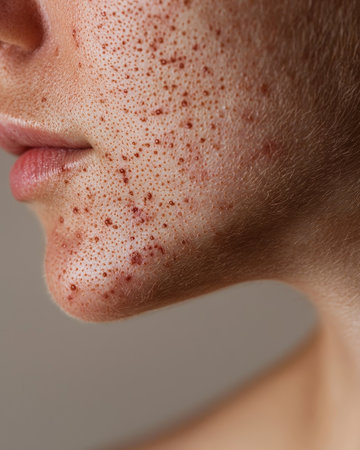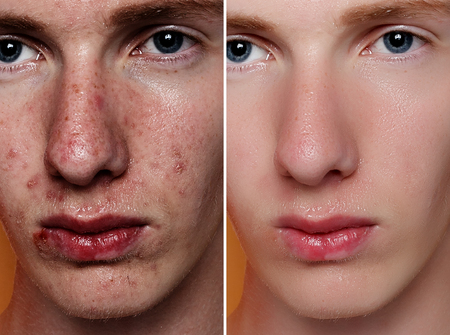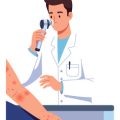Introduction to Acne and Its Gendered Variations in the UK
Acne is a prevalent dermatological issue that affects a significant proportion of the UK population, spanning across various age groups and backgrounds. In Britain, acne is not only seen as a medical condition but also as a social concern, often impacting confidence and self-perception, particularly among adolescents and young adults. Public discourse around skin health has grown in recent years, yet there remains a distinct lack of awareness regarding the ways in which acne manifests differently between genders. Early observations from clinicians and community reports suggest that British males and females may experience divergent patterns in acne presentation, severity, and emotional burden. Furthermore, societal attitudes towards skin conditions in the UK can influence how individuals seek treatment or cope with scarring, often reinforcing gendered expectations about appearance and wellbeing. These initial insights prompt a closer examination of both clinical and cultural dynamics shaping acne experiences for men and women across the country.
2. Clinical Presentation: Comparing Acne Manifestation in Males and Females
When considering acne within the UK context, it is crucial to recognise that the clinical presentation of this common skin condition varies significantly between males and females. These differences are influenced by a combination of biological, hormonal, and even cultural factors unique to British society. Understanding these distinctions helps clinicians tailor their diagnostic and therapeutic approaches more effectively.
Age of Onset
Acne typically emerges during adolescence for both sexes; however, studies in the UK show that females often experience an earlier onset compared to males. Girls may notice symptoms as young as 11 or 12 years old, coinciding with the start of puberty, while boys usually develop acne slightly later, around ages 13 to 15. This difference is primarily attributed to hormonal changes occurring at different stages during puberty.
Severity and Progression
The severity of acne also tends to diverge between genders. In general:
| Males | Females | |
|---|---|---|
| Severity | Often more severe, with nodulocystic lesions being more common | Tends towards milder to moderate forms, but persistent into adulthood |
| Course | Peaks in late teens and early twenties; often resolves faster after adolescence | May persist well into adult life; some women report flare-ups premenstrually or during hormonal changes (e.g., pregnancy, menopause) |
Affected Areas
The distribution of acne lesions also differs markedly:
| Males | Females | |
|---|---|---|
| Common Sites | Mainly face, back, and chest; trunk involvement more pronounced | Primarily face (especially jawline and lower cheeks), with less trunk involvement |
| Pattern | Larger, deeper lesions; scarring more likely on the back and chest | Smaller, inflammatory papules and pustules; hormonal pattern common (jawline, chin) |
Clinical Relevance in the UK Setting
The above patterns have practical implications for healthcare professionals across the UK. For instance, adolescent boys presenting with severe truncal acne may require prompt intervention to prevent long-term scarring—a concern particularly relevant given the prevalence of sports such as rugby or football where exposed skin can be easily irritated. Conversely, women experiencing cyclical outbreaks linked to menstruation may benefit from therapies targeting hormonal regulation.
Cultural Considerations
Within British culture, there can be differing attitudes toward seeking treatment for acne between genders. Young men might delay consultation until symptoms are severe due to social stigma or underestimation of the problem, whereas young women often seek help earlier due to heightened awareness regarding facial appearance. This social dynamic further influences how acne presents at the time of clinical assessment.
In summary, appreciating these gender-specific trends in acne manifestation—age of onset, severity, affected areas—is essential for clinicians aiming to provide nuanced care tailored to individual patient profiles within the UK’s diverse population.

3. Factors Influencing Acne in Different Genders
Gender differences in acne manifestation and outcomes within the UK are shaped by a confluence of biological, lifestyle, dietary, and socio-cultural factors. Understanding these influences is vital for clinicians and patients seeking effective, tailored management strategies.
Hormonal Differences
One of the primary factors underlying gender disparities in acne is hormonal variation. In females, fluctuations related to the menstrual cycle, polycystic ovary syndrome (PCOS), pregnancy, and contraceptive use can exacerbate or modify acne severity and distribution. Conversely, males typically experience more persistent and severe acne during adolescence due to higher levels of circulating androgens that stimulate sebaceous gland activity. These hormonal differences influence not only the prevalence but also the anatomical presentation of lesions, with men often affected on the trunk and women more commonly on the lower face and jawline.
Lifestyle Influences
Lifestyle choices prevalent in the UK—such as patterns of exercise, stress management, and personal hygiene—also play a role. For instance, increased gym attendance, particularly among young men, may lead to frictional acne (‘acne mechanica’), while stress-related outbreaks are frequently reported by women balancing work and family responsibilities. Smoking rates, although generally declining across the UK, show slight gender variations and have been linked to specific forms of acne in both sexes.
Dietary Factors
The British diet, with its unique blend of traditional fare and modern influences, presents another layer of complexity. Emerging research suggests that high-glycaemic-index foods and dairy products—staples for many UK adolescents—may exacerbate acne symptoms. Gender-specific eating habits further modulate this effect; for example, studies indicate women may be more likely to alter their diet in response to skin concerns, potentially impacting both presentation and treatment outcomes.
Socio-Cultural Aspects Unique to the UK
Cultural attitudes towards skin health and appearance differ between genders in the UK context. Social stigma around visible acne often affects young women more acutely due to societal beauty standards perpetuated by media and peer groups. This can result in greater psychological distress and influence their willingness to seek professional help or adhere to prescribed treatments. Additionally, access to dermatological care via the NHS or private sector may be shaped by gendered perceptions regarding self-care and healthcare utilisation.
Summary
The interplay of hormones, lifestyle habits, diet, and socio-cultural norms creates a nuanced landscape for acne development in different genders within the UK. Recognising these factors is crucial for providing empathetic advice and optimising treatment approaches tailored to individual needs.
4. Treatment Approaches and Gender Responsiveness
Within the UK, acne management follows a structured approach that combines topical and systemic therapies, tailored according to severity and patient response. However, gender plays a significant role in both the selection of treatments and how patients respond or adhere to prescribed regimens.
Standard Acne Treatments in the UK
The National Institute for Health and Care Excellence (NICE) guidelines recommend an evidence-based ladder of interventions. The main categories include:
| Treatment Type | Examples | Typical Indications |
|---|---|---|
| Topical Therapies | Benzoyl peroxide, retinoids (adapalene), topical antibiotics (clindamycin) | Mild to moderate acne |
| Systemic Antibiotics | Lymecycline, doxycycline, erythromycin | Moderate to severe acne unresponsive to topicals |
| Hormonal Therapies | Combined oral contraceptives (COCPs), anti-androgens (spironolactone – off-label use) | Females with suspected hormonal drivers |
| Oral Retinoids | Isotretinoin | Severe, scarring, or treatment-resistant cases; specialist initiation only |
Gender Differences in Treatment Response and Adherence
The response to acne therapies varies notably between males and females due to physiological and behavioural factors. For instance, hormonal therapies are exclusively used in female patients, especially when signs suggest an underlying androgen excess. Males generally present with more severe nodulocystic lesions requiring systemic options like isotretinoin sooner, whereas females may benefit from hormonal modulation.
Treatment Adherence Patterns by Gender
| Aspect | Females | Males |
|---|---|---|
| Adherence to Topicals | Generally higher; more likely to integrate into skincare routines; may discontinue if cosmetic side effects occur (e.g., dryness) | Tends to be lower; often cite inconvenience or forgetfulness as barriers; less concerned about mild side effects but more likely to discontinue early if results are slow |
| Systemic Therapy Uptake | Cautious with antibiotics due to concerns about long-term effects; more receptive to hormonal options if eligible; adherence is variable depending on perceived benefits vs side effects (e.g., weight changes) | More accepting of oral antibiotics or isotretinoin for rapid results; concern about isotretinoin’s psychiatric risks can affect adherence but less likely to express these openly in clinic settings |
| Use of Hormonal Treatments | Mainstay for many women, especially those with PCOS or menstrual-linked flares; adherence higher when acne impacts quality of life significantly | N/A (not recommended for males) |
| Follow-up Attendance Rates | Slightly higher; tend to seek advice for ongoing skin concerns or side effects | Slightly lower; may drop out after initial prescription unless acne is severe or visibly scarring |
Cultural and Social Considerations in the UK Context
The perception of acne treatments and willingness to persist varies with local attitudes towards skin health and stigma. In British culture, there can be reluctance—especially among young men—to discuss skin issues openly or adhere strictly to long-term regimens. Conversely, women may feel greater societal pressure regarding appearance, driving both higher engagement and frustration with slow or incomplete responses.
This nuanced understanding underlines the importance of gender-sensitive communication from healthcare professionals. Tailored education, realistic goal setting, and regular follow-up can help address these disparities and optimise outcomes for all patients in the UK context.
5. Scarring Patterns and Long-term Outcomes
Acne scarring presents distinct patterns and long-term consequences between genders, with UK-based research offering valuable insights into these differences. Males in the UK tend to experience more severe, deep-rooted scarring such as ice pick and boxcar scars, often a result of nodulocystic acne that is more prevalent in this group. In contrast, females are more likely to develop superficial, atrophic scars, which may be less pronounced but remain psychologically distressing. Several studies conducted across British dermatology clinics have confirmed that men frequently report persistent physical scarring well into adulthood, whereas women more commonly cite pigmentation changes and ongoing skin texture concerns.
Psychological Impact: A Gendered Perspective
The psychological ramifications of acne scarring are profound for both sexes, but cultural factors in the UK can intensify the impact for women. British social norms around appearance contribute to heightened self-consciousness among young women, often leading to reduced self-esteem and social withdrawal. While men may underreport emotional distress due to traditional expectations around stoicism, evidence suggests that they also experience significant impacts on confidence and mental health—sometimes compounded by reluctance to seek support.
Long-term Outcomes: Access and Attitudes Towards Care
Longitudinal data from the UK reveal that women are generally more proactive in seeking dermatological care for scarring, including laser treatments and topical therapies available through the NHS or private clinics. Men, however, tend to delay intervention until scars are well established, potentially limiting treatment efficacy. This difference is partly attributed to gendered attitudes towards healthcare utilisation within the UK context, where female patients are more likely to engage with preventative and cosmetic services.
UK-specific Data and Cultural Considerations
Recent audits from British dermatology departments highlight regional disparities in access to advanced scar management, with urban centres like London and Manchester offering greater availability compared to rural areas. Furthermore, NHS guidelines emphasise early intervention for high-risk groups—a policy particularly relevant given the increased risk of severe scarring among males. Awareness campaigns by UK charities such as Changing Faces play a crucial role in addressing stigma and supporting individuals coping with visible scars.
In summary, gender differences in acne scarring within the UK reflect not only biological predispositions but also cultural expectations and access to care. Recognising these nuanced patterns is essential for clinicians aiming to provide equitable, effective support tailored to the needs of both men and women throughout their acne journey.
6. Barriers to Care and Support Systems in the UK
Challenges in Accessing Acne Treatment
Despite the prevalence of acne across all genders, gaining timely and effective care within the UK presents notable challenges. The National Health Service (NHS) provides universal access, but waiting lists for dermatology appointments can be lengthy. This delay can disproportionately affect individuals with severe symptoms or those experiencing significant psychological distress. Additionally, general practitioners (GPs), often being the first point of contact, may have limited time or resources to address the nuanced needs of each patient, particularly when it comes to gender-specific concerns.
Gender-Specific Disparities in Healthcare Settings
Research and anecdotal evidence indicate that gender plays a significant role in both the recognition and management of acne within British healthcare settings. For instance, female patients frequently report their acne being dismissed as a cosmetic issue or as part of normal hormonal fluctuations, leading to under-treatment or delayed specialist referral. Conversely, male patients may face stigma associated with seeking help for skin conditions, potentially resulting in reluctance to access services until symptoms become severe. These disparities contribute to variations in outcomes, including scarring and long-term psychological effects.
Cultural Attitudes and Their Impact
The British cultural tendency towards stoicism and understatement can also influence how individuals seek support for acne. Men, in particular, may feel social pressure to minimise their concerns or avoid discussing issues related to appearance. Women might encounter unsolicited advice or judgement regarding skincare routines and lifestyle choices, which can compound feelings of shame or self-blame. Such attitudes create additional emotional barriers on top of systemic ones.
Support Systems: Gaps and Opportunities
While there are support networks available—such as online forums, local support groups, and national charities—they are not always well-publicised or tailored to gender-specific experiences. Schools and workplaces may lack adequate policies for supporting young people and adults dealing with visible skin conditions. Furthermore, mental health support integrated with dermatological care remains limited in many NHS trusts, despite clear evidence linking acne to anxiety and depression.
Addressing Inequalities Moving Forward
Tackling these barriers requires a multifaceted approach: improved training for healthcare professionals on recognising gendered experiences; reducing waiting times for specialist care; better promotion of support resources; and fostering open conversations about acne without stigma. Only by acknowledging the unique challenges faced by different genders within the UK context can truly equitable care be achieved.
7. Conclusions and Future Directions
The examination of gender differences in acne presentation, treatment, and scarring within the UK context reveals several key findings. Firstly, the clinical manifestation of acne frequently diverges between males and females, with males tending towards more severe inflammatory presentations and females often experiencing persistent adult acne, especially along the jawline. These differences influence both the psychosocial impact of the condition and the approaches to management, underscoring the need for tailored strategies within UK dermatology practice.
From a treatment perspective, gender-specific responses to therapy—such as the efficacy of hormonal interventions in females or concerns regarding isotretinoin in males—highlight the importance of personalised care. Clinicians in the UK should remain sensitive to these distinctions when discussing treatment options, ensuring that both medical and psychosocial aspects are addressed according to individual needs. Additionally, the propensity for scarring appears to be influenced by gender-related behavioural factors such as delayed help-seeking among young men, suggesting that targeted education campaigns could have meaningful benefits.
For clinical practice in the UK, these insights emphasise the value of holistic assessment: not only considering biological sex but also social and psychological contexts that may affect both acne severity and outcomes. The evidence supports a proactive approach in identifying high-risk individuals and adapting treatment regimens accordingly. Furthermore, increased awareness among GPs and dermatology specialists about gender nuances can improve patient engagement and satisfaction.
Looking forward, further research is warranted into the underlying mechanisms driving gender disparities in acne within diverse UK populations. Longitudinal studies examining response to newer therapies across genders would be particularly valuable, as would qualitative research exploring patient experiences. Such investigations will help refine guidelines to better support all patients affected by acne across the UK.

